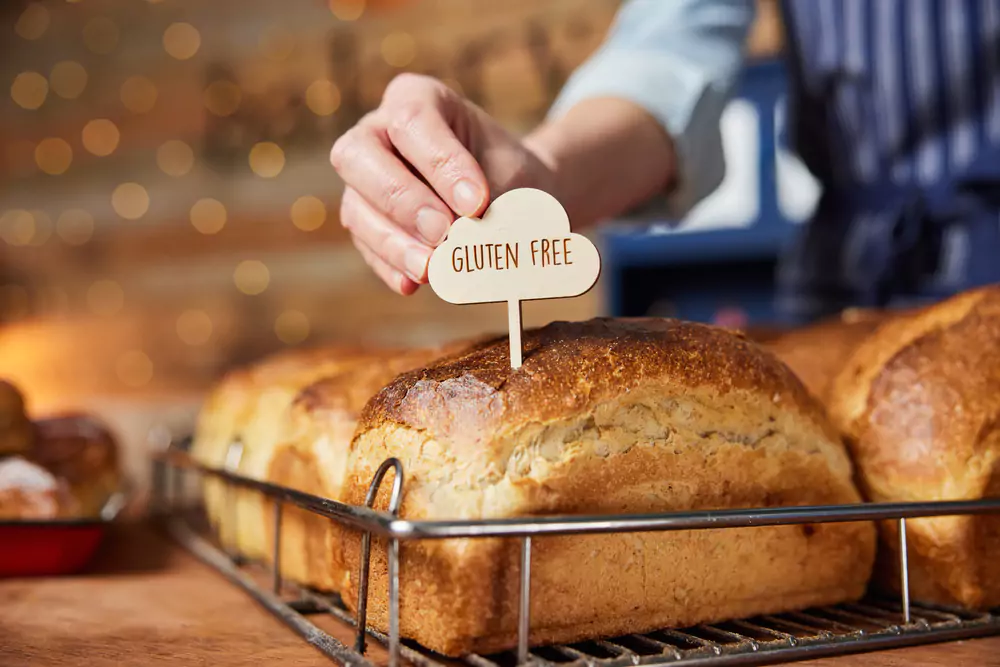Gluten-free diets have become increasingly popular in recent years as more and more people discover they have sensitivities or allergies to gluten. However, finding the best gluten-free bread can be a challenge.
Many people who need to follow a gluten-free diet often struggle to find good and healthy bread. The variety of gluten-free bread on the market can be overwhelming, making it difficult to know which ones are worth trying.
In this blog post, we will explore the best gluten-free bread options that taste great, are made with high-quality ingredients, and are nutritious. By trying some of these breads, you can enjoy the convenience and satisfaction of having a sandwich or toast without compromising your health.
What Is Gluten-Free Bread?
Gluten-free bread is a type of bread that does not contain gluten, a protein found in wheat, barley, and rye. It is specifically designed for individuals who have celiac disease, gluten sensitivity, or choose to follow a gluten-free diet for various reasons. When consuming gluten, these individuals may experience adverse effects, such as digestive issues or inflammation.
Gluten-free bread is made using alternative flour and ingredients, such as rice flour, potato flour, tapioca flour, and various types of nut flour. These ingredients are combined with other components, like xanthan gum or guar gum, to create the desired texture and elasticity that traditional wheat-based bread has. Gluten-free bread may contain eggs, dairy, or other ingredients to provide taste and nutrition.
5 Best Gluten-Free Breads
Regarding gluten-free bread options, various types are available to suit different preferences and dietary needs. This comparison will explore some of the best gluten-free bread options and their unique characteristics.
Gluten Free Bread Without Potato Starch

Try Schar’s Gluten-Free Artisan Baker Multiseed Bread for gluten-free bread without potato starch. This bread is made with a blend of rice, quinoa, and amaranth flours, offering a delicious and nutritious alternative to traditional wheat bread.
Gluten Free Bread With Psyllium Husk
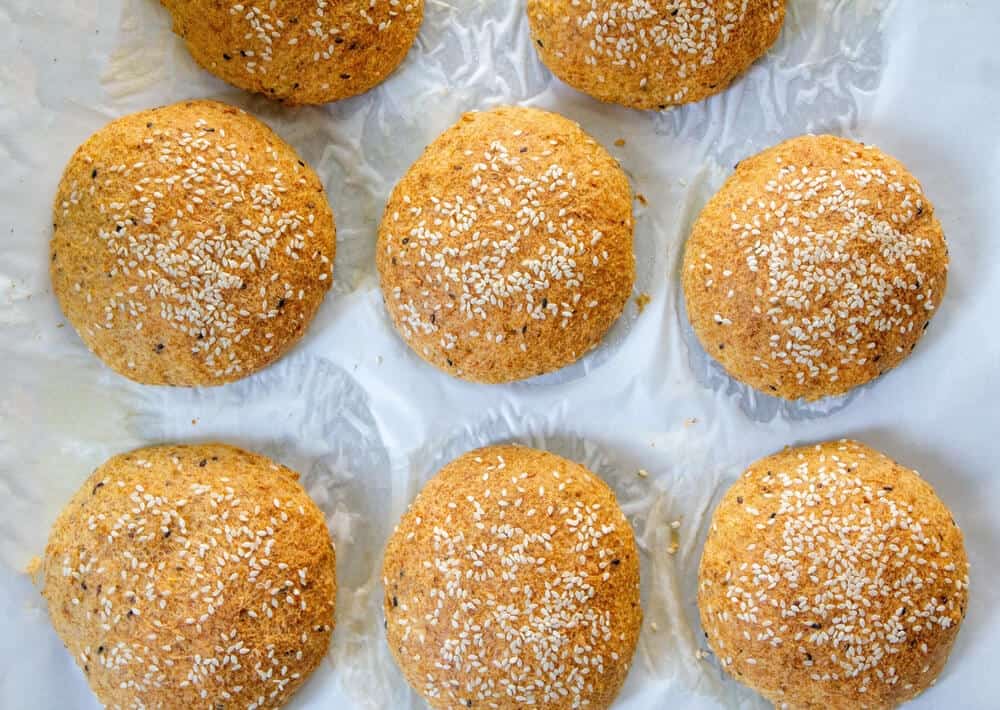
For those who prefer bread that is high in fiber, try BFree’s Gluten-Free Seeded Sandwich Loaf. This bread is made with psyllium husk, a natural source of dietary fiber, and is free from wheat, gluten, and dairy. It also has a soft and moist texture, making it perfect for sandwiches.
Best Wheat Bread With Honey
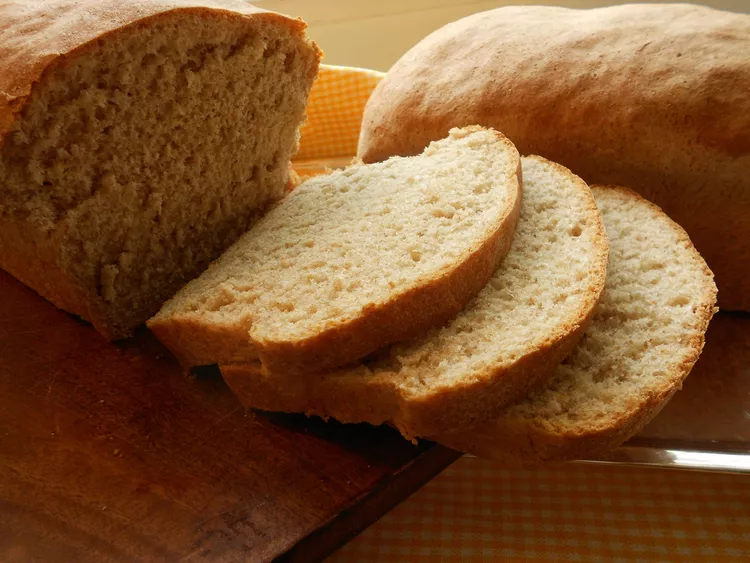
If you’re looking for wheat bread with a touch of sweetness, try Alvarado Street Bakery’s Honey Whole Wheat Bread. This bread is made with organic whole wheat flour, honey, and various seeds, providing a delicious and wholesome option for those who can tolerate wheat.
Gluten Free Bread Without Rice Flour

For those who want to avoid rice flour in their gluten-free bread, try Canyon Bakehouse’s Gluten-Free Heritage Style Whole Grain Bread. This bread is made with a blend of sorghum, teff, and quinoa flours, providing a nutritious and flavorful option for those who need rice-free bread.
Best Gluten-Free Zucchini Bread
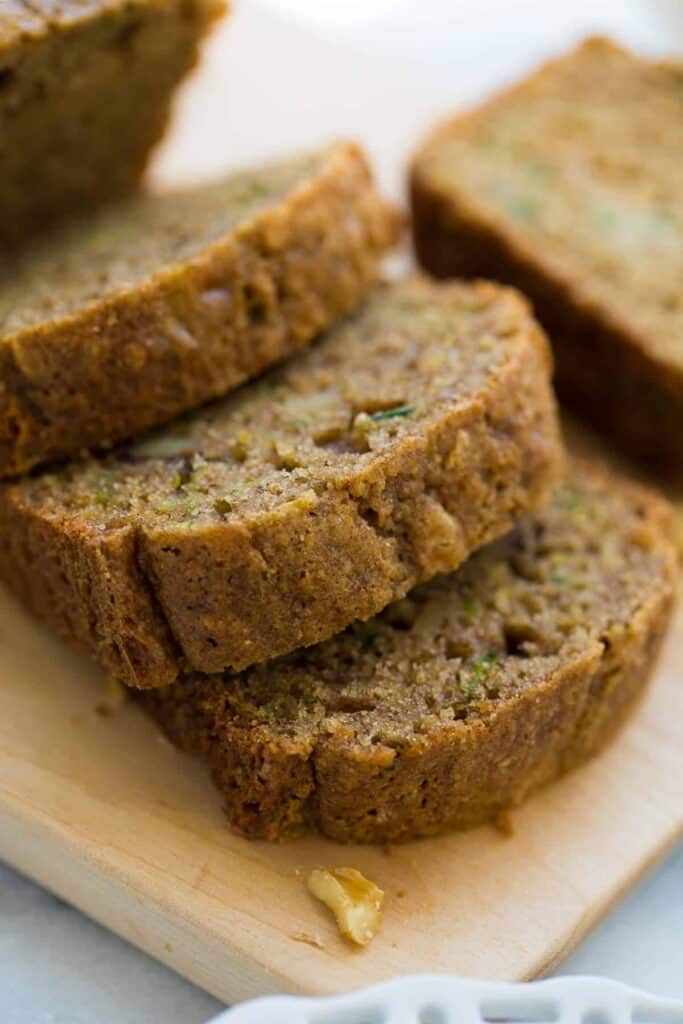
If you’re in the mood for a sweet and moist bread, try making this Gluten-Free Zucchini Bread recipe from The Spruce Eats. This bread is made with zucchini, almond flour, and a blend of gluten-free flour, resulting in a delicious and healthy dessert or snack option.
Best Gluten Free Bread Alternatives
As someone who has explored various gluten-free bread options, I understand the importance of finding alternatives that are not only free from gluten but also delicious and versatile.
Here are some of the best gluten-free bread alternatives I have encountered.

For Celiacs
For individuals with celiac disease, it’s crucial to find gluten-free bread that not only tastes good but also doesn’t trigger any adverse reactions. One of the top choices for celiacs is bread made from almond flour or coconut flour. These alternatives provide a nutty flavor and a moist texture, making them suitable for celiac disease patients.
For Stuffing
When it comes to making stuffing for special occasions or holiday meals, using gluten-free bread is essential. A great option for stuffing is bread made from quinoa flour or brown rice flour. These varieties hold up well when mixed with herbs, vegetables, and other ingredients, providing a satisfying texture and taste in stuffing recipes.
For Sandwiches
Finding the right gluten-free bread for sandwiches can be a game-changer for those who follow a gluten-free diet. Look for sandwich bread made from tapioca flour, sorghum flour, and potato starch. This combination often yields a soft, pliable texture, creating delicious gluten-free sandwiches.
For Toast
For a perfect slice of gluten-free toast, consider bread made from teff flour or millet flour. These options toast beautifully and offer a slightly nutty flavor that pairs well with various toppings such as avocado, nut butter, or jam.
Best Gluten Free Bread Loaf
When seeking a versatile gluten-free bread loaf that can be used for various purposes, including sandwiches, toast, and even French toast, consider options made from a blend of gluten-free flour such as sorghum flour, brown rice flour, and tapioca starch. This combination often results in a well-rounded loaf with a pleasant taste and texture.
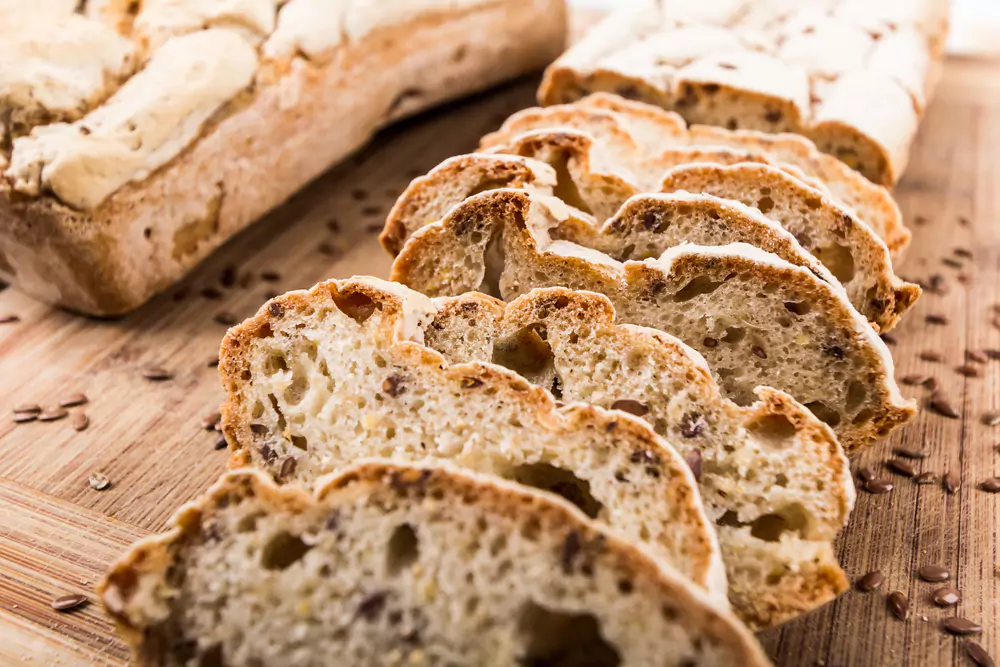
Gluten-Free Bread Benefits
When it comes to gluten-free bread benefits, there are numerous reasons why people consume this type of bread. Here are five gluten-free bread benefits, explained in simple terms:
Improved Digestion
Gluten-free bread is ideal for individuals with celiac disease or gluten sensitivity, as it eliminates the consumption of gluten, which can cause digestive issues. This can lead to improved gut health and overall well-being.
Weight Management
Gluten-free bread is often made with healthier ingredients like nuts, seeds, and alternative flour, which can contribute to a balanced and nutritious diet. This can aid in weight management and promote a healthier lifestyle.
Energy Boost
Gluten-free bread can provide a sustainable energy boost throughout the day. Since it is made without gluten, it is easier for the body to break down and process, allowing it to absorb nutrients more efficiently.
Nutrient Diversity
Gluten-free bread can be made from various alternative flours, such as rice, quinoa, and almonds, increasing the diversity of nutrients in your diet. This can help ensure you receive a wide range of vitamins, minerals, and other essential nutrients.
Reduced Inflammation
Gluten-free bread can help reduce inflammation in the body, as it eliminates the consumption of gluten, which has been linked to inflammation in some individuals. This can lead to a decreased risk of chronic diseases and promote overall health.
Best Gluten-Free Bread For Weight Loss
For individuals looking to manage their weight while following a gluten-free diet, choosing bread made from almond flour or flaxseed meal can be beneficial. These alternatives are often lower in carbohydrates and higher in healthy fats and fiber, which can contribute to satiety and better weight management.
How We Chose The Best Gluten-Free Bread?

Choosing the best gluten-free bread can be challenging, especially with the growing number of options available in the market. There are several factors to consider when selecting the perfect gluten-free bread to suit your needs.
Ingredients
First and foremost, it is essential to check the ingredients list on the packaging. Look for bread made from quality ingredients, such as brown rice flour, quinoa flour, or tapioca starch. Avoid any wheat or gluten bread, as these can trigger allergic reactions or discomfort for those with gluten sensitivities.
Taste and Texture
Gluten-free bread can sometimes taste and texture differently than traditional wheat bread. Taste and texture should be considered when trying out different gluten-free bread options. Some people prefer a lighter, airier texture, while others prefer a denser, heartier bread. It is essential to find a bread that suits your personal preferences.
Nutritional Value
It’s important to ensure that your gluten-free bread is nutritious and provides the necessary vitamins and minerals. Check the nutritional information on the packaging to ensure the bread is a good fiber, protein, and essential vitamin source.
Allergens
Some gluten-free breads may still contain allergens like eggs, soy, or dairy. If you have additional food allergies or sensitivities, it’s crucial to read the ingredient list carefully and choose a free bread from these allergens.
Price and Availability
While finding the perfect gluten-free bread is important, it’s also essential to consider the cost and accessibility of the product. Look for bread that is reasonably priced and readily available in your local grocery store or online.
How To Make Gluten-Free Bread At Home?
For some reason, if you cannot choose gluten-free bread at the store, you may want to consider making your gluten-free bread at home. This way, you can ensure that the ingredients used are exactly what you want, and you can control the quality and freshness of the bread.
Here is a simple, step-by-step guide on how to make gluten-free bread at home:
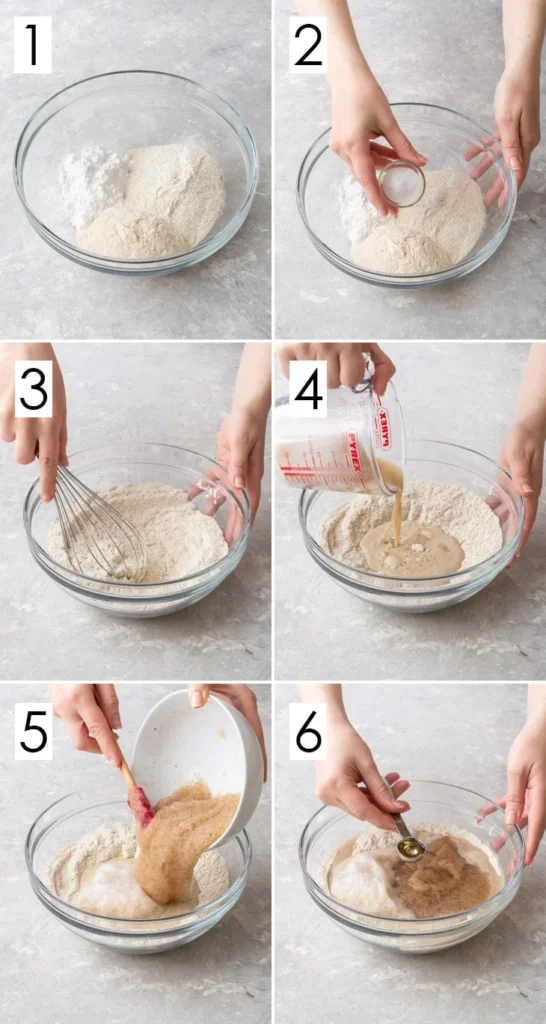
Ingredients
- 2 cups gluten-free flour blend (you can use a store-bought blend or make your own by combining rice flour, potato starch, and tapioca flour)
- 1 teaspoon xanthan gum
- 1/4 teaspoon salt
- 1 tablespoon instant yeast
- 1 tablespoon sugar
- 1 cup warm water
- 1 tablespoon olive oil
- 1 teaspoon apple cider vinegar
Best Gluten-Free Bread Recipe
To make homemade bread, follow the recipe mentioned below:
Prepare your ingredients
Before starting, ensure that all ingredients are measured and ready to use. Preheat your oven to 350°F (175°C) and line a baking sheet with parchment paper.
Combine dry ingredients
Whisk together the gluten-free flour blend, xanthan gum, salt, instant yeast, and sugar in a large mixing bowl. This will ensure that the ingredients are evenly distributed throughout the bread.

Mix wet ingredients
Combine the warm water, olive oil, and apple cider vinegar in a separate bowl. Slowly pour the wet mixture into the dry ingredients, stirring. Continue mixing until a soft dough forms. Add a little more gluten-free flour blend if the dough is too sticky. If it’s too dry, add a small amount of water.
Knead the dough
Lightly flour a clean surface and place the dough on it. Knead the dough gently for about 2-3 minutes until it is smooth and elastic. This will help to develop the structure of the bread.
Shape the loaf
Shape the dough into a rough rectangle about 1/2 inch thick. Place the dough onto the lined baking sheet and score the top with a knife, making a few shallow slashes to create a traditional loaf shape.
Proof the dough
Cover the loaf with a clean towel and let it rise in a warm, draft-free area for 30-45 minutes or until it has doubled.
Bake the bread
Once the dough has risen, remove the towel and place the loaf in the oven. Bake for 25-30 minutes or until the loaf is golden brown and sounds hollow when tapped.

Cool the bread
Remove the loaf from the oven and let it cool on a wire rack for at least 10 minutes before slicing. Lastly, know that you can also make breadsticks using the same recipe.

What Is The Best Way To Store Gluten-Free Baked?
Now that you have made your own gluten-free baked goods, storing them properly is essential to maintain their freshness and quality. The best way to store gluten-free baked goods is by following these simple steps:
Cooling
Allow your gluten-free baked goods to cool completely before storing them. This prevents moisture buildup, which can cause mold and spoilage.
Airtight Containers
Use airtight containers or resealable plastic bags to store your baked goods. This will help keep out moisture, air, and pests.
Temperature
Store your gluten-free baked goods in a cool, dry place away from direct sunlight or heat sources. This prevents the fats in your baked goods from becoming rancid.
Separation
If you have multiple types of gluten-free baked goods, store them separately to prevent cross-contamination.
Freezing
For longer storage, consider freezing your baked goods. Wrap them tightly in plastic wrap or aluminum foil and store them in a freezer-safe container or resealable plastic bag. Be sure to label the container with the name and date of the item.
Can I Freeze The Bread?
Well, yes, you can freeze bread! Freezing bread is a great way to extend its shelf life and keep it fresh for longer periods. To freeze bread, first ensure it is completely cooled and moisture-free. Wrap the bread tightly in plastic or aluminum foil to protect it from freezer burn. You can also place the bread in a freezer-safe plastic bag, removing as much air as possible before sealing. When you’re ready to eat the frozen bread, simply let it thaw at room temperature for a few hours or overnight, and then toast or use it as desired.
Where To Buy Gluten-Free Bread?
When it comes to purchasing gluten-free bread, there are several bread brands available at popular grocery stores. Here are some of the best gluten-free bread options at Whole Foods, Publix, Kroger, and Sprouts:
At Whole Foods:
At Whole Foods, you can find a variety of gluten-free bread options. Some popular brands include Schar Bread, Udi’s, and Canyon Bakehouse. Schar’s Multiseed bread offers a delicious taste with added fiber, while Udi’s White Sandwich bread is perfect for making sandwiches. Canyon Bakehouse’s Heritage Style Whole Grain bread is another excellent choice for those looking for a hearty, whole grain option.
At Publix:
At Publix, you can find gluten-free bread from brands such as Three Bakers, Freedom Foods, and Wegmans. Three Bakers offer a classic white bread option, while Freedom Foods’ gluten-free bread comes in various flavors like white, multigrain, and sourdough. Wegmans has a range of gluten-free breads, including a French baguette and a cinnamon raisin bread.
At Kroger:
Unlike Trader Joe’s bread, Kroger stores offer several gluten-free bread options from brands like 365 Everyday Value, Simple Truth, and Canyon Bakehouse. The 365 Everyday Value Gluten Free bread is a budget-friendly option, while Simple Truth’s Multigrain bread offers a delicious and nutritious choice. Canyon Bakehouse’s Mountain White bread is another popular choice at Kroger stores.
At Sprouts:
At Sprouts, you can find gluten-free bread from brands like Schar, BFree, and Rudi’s Gluten-Free Bakery. Schar’s White bread is soft and fluffy, while BFree’s Sandwich Thins are perfect for making sandwiches. Rudi’s Gluten-Free Bakery offers a variety of bread options, including classic white bread, sourdough loaf, and seeded bread.
Conclusion
In conclusion, embracing a gluten-free lifestyle can be both enjoyable and beneficial for those with gluten sensitivities or celiac disease. The variety of gluten-free breads available today offers many delicious options for every taste and dietary preference.
To make an informed decision, it is essential to research and explore each gluten-free bread brand’s nutritional content and ingredients. Look for breads high in fiber, low in sugar, and made from wholesome, nutritious ingredients. Additionally, consider the texture and taste of each bread to ensure you find a product you truly enjoy.
